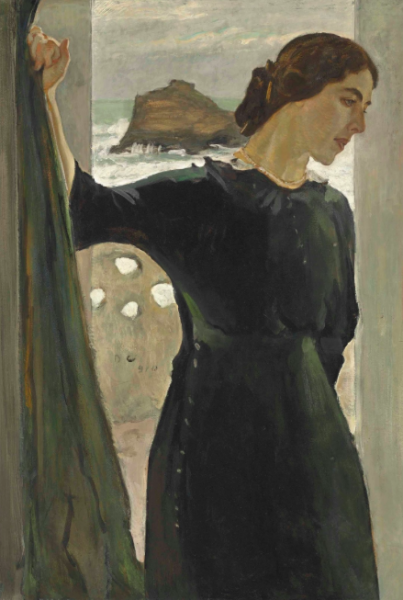
London’s auction houses played host to the annual sale series known as Russia Week last week. And across the board, results were miserable.
Sotheby’s Monday night sale found takers for only 12 of its lots, logging a almost unheard of 32 percent sell-through rate. At the same sale last year, 74 percent of the works on offer found buyers—still not great, but passable and a home run in comparison to 2013. The sale was led by a £1.3 million ($2 million) result for a Boris Kustodiev cityscape of a Crimean village and finished with £5 million ($7.8 million) of art sold by the end of the evening, down from nearly £8 million in 2013.
At Christie’s, things were little better. Fifty-seven percent of lots on offer sold during the day on Monday. Last year, that rate was 71 percent. However, strong results for a portrait of Maria Zetlin by Valentin Serov—which sold for a whopping £9.3 million ($14.5 million), miles above its £1.5–2.5 million presale estimate—allowed the house to best its 2013 sale total, making £20.2 million ($32 million) in 2014 over £16.9 million last year.
At Bonhams, only 38 percent of the 178 lots on offer found buyers. And MacDougall’s, which touts Russian art as its specialty, only sold 34 percent of its offer.
Dealers polled by the New York Times following the sale speculated that crushing sanctions against Russia’s oligarchs and other ultra-wealthy individuals have had a near-immediate effect on the country’s collective appetite for artworks.
The sanctions and OPEC’s ongoing price war with American shale oil producers that has seen the commodity lose 30 percent of its value in recent weeks are said to have resulted in $140 billion in losses for the Russian economy. With Russia’s legendarily top-heavy economy, the moneyed are said to be bearing the brunt of that contraction, especially those not at the very, very top.
However, there may be other factors at work to kill the market for Russian art. Collectors at the very upper reaches of wealth were said to have been quite active in the New York sales this fall. It marks a continued move away from national artists—always an entry point for new initiates to the buying side of the art world—to the Impressionist and modern and Old Masters segment of the market.
Such a shift mirrors historic moves by many other once-emerging economies, such as the United States. Where that will leave the Russian market in the long term, if the country’s nascent upper-middle class fails to fully recover from these recent setbacks, however, remains to be seen.